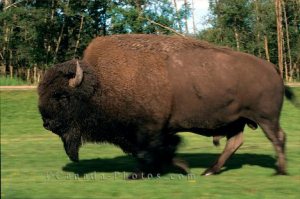Okay, homonyms and homophones themselves are not that special. By themselves, they wouldn’t warrant an Unusual Wikipedia entry. But what can be done with them is very interesting. And, of course, educational.
There are famous examples like the sentence: Buffalo buffalo Buffalo buffalo buffalo buffalo Buffalo buffalo. Don’t understand it? Me neither. Fortunately, there are explanations:
The sentence is unpunctuated and uses three different readings of the word “buffalo”. In order of their first use, these are
- c. The city of Buffalo, New York (or any other place named “Buffalo”), which is used as an adjective in the sentence and is followed by the animal;
- a. The animal buffalo, in the plural (equivalent to “buffaloes” or “buffalos”), in order to avoid articles (a noun);
- v. The verb “buffalo” meaning to bully, confuse, deceive, or intimidate.
Marking each “buffalo” with its use as shown above gives
- Buffaloc buffaloa Buffaloc buffaloa buffalov buffalov Buffaloc buffaloa.
Or translated: Bison from Buffalo, New York, who are intimidated by other bison in their community also happen to intimidate other bison in their community.
Then there’s James while John had had had had had had had had had had had a better effect on the teacher. This translates to:
James, while John had had “had,” had had “had had”; “had had” had had a better effect on the teacher.
And to show the importance of punctutation: That that is is that that is not is not is that it it is, which is:
That that is, is. That that is not, is not. Is that it? It is.
There are many more examples of playing with linguistic ambiguity.
But the height of all this is probably the Chinese poem Lion-Eating Poet in the Stone Den. This poem consists entirely of the syllable shi, with all it’s different tones. And it makes sense!
- « Shī Shì shí shī shǐ »
- Shíshì shīshì Shī Shì, shì shī, shì shí shí shī.
- Shì shíshí shì shì shì shī.
- Shí shí, shì shí shī shì shì.
- Shì shí, shì Shī Shì shì shì.
- Shì shì shì shí shī, shì shǐ shì, shǐ shì shí shī shìshì.
- Shì shí shì shí shī shī, shì shíshì.
- Shíshì shī, Shì shǐ shì shì shíshì.
- Shíshì shì, Shì shǐ shì shí shì shí shī.
- Shí shí, shǐ shí shì shí shī, shí shí shí shī shī.
- Shì shì shì shì.
Translated to:
- « Lion-Eating Poet in the Stone Den »
- In a stone den was a poet Shi, who was a lion addict, and had resolved to eat ten.
- He often went to the market to look for lions.
- At ten o’clock, ten lions had just arrived at the market.
- At that time, Shi had just arrived at the market.
- He saw those ten lions, and using his trusty arrows, caused the ten lions to die.
- He brought the corpses of the ten lions to the stone den.
- The stone den was damp. He asked his servants to wipe it.
- After the stone den was wiped, he tried to eat those ten lions.
- When he ate, he realized that those ten lions were in fact ten stone lion corpses.
- Try to explain this matter.
Cool, huh?

Wow. Just one word has so many meanings? I am glad I don’t have to speak Chinese – I would probably be misunderstood twenty times everyday :P
It’s actually not just one word. Every other sign on the i means it’s pronounced slightly differently and is another word.
By and large, the poem is only understandable in written form.
But I know exactly what you mean… I can’t even manage the difference between é and è in French, I would so fail in Chinese.